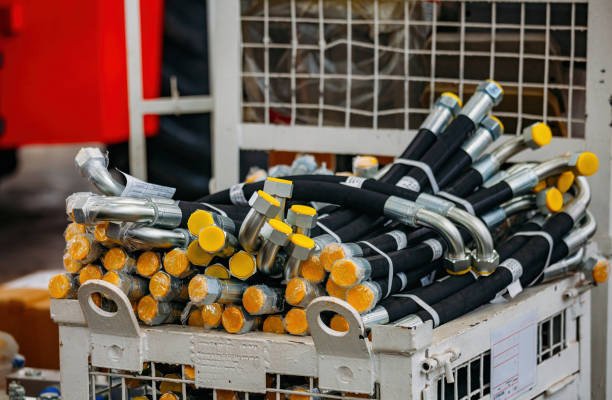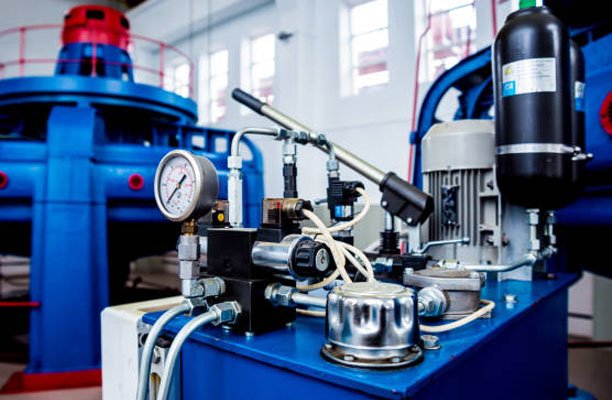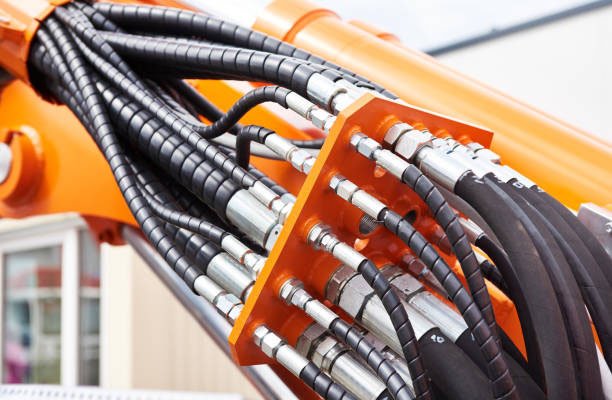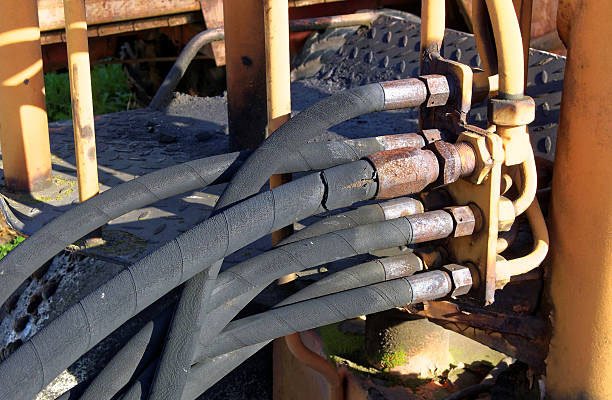Hydraulic hoses are essential for industrial machinery, ensuring efficient fluid transfer under pressure. To avoid unexpected failures, accidents, and high repair costs, it’s crucial to learn how to store and maintain hydraulic hoses properly. This guide will help you preserve hose integrity and boost machinery performance with proven strategies and tips.
What Are Hydraulic Hoses?
Hydraulic hoses are high-pressure tubes designed to transfer fluids in hydraulic systems. Made from rubber, thermoplastics, or synthetic materials, these hoses are reinforced to handle extreme conditions.
Regular hydraulic hose maintenance ensures these components operate safely and efficiently, while proper storage protects them from environmental damage.
Importance of Proper Storage and Maintenance
Improper handling or neglect of hydraulic hoses can lead to premature failure, safety hazards, and increased operational costs. Maintaining and storing them correctly helps to:
- Extend the service life of the hoses.
- Prevent contamination and degradation.
- Minimize downtime due to unexpected failures.
- Ensure operator safety and system reliability.
Key Factors to Consider Before Storing Hydraulic Hoses
Before you store hydraulic hoses, assess the following critical factors:
1. Environmental Conditions
- Temperature: Avoid extreme temperatures; ideally, store hoses in a climate-controlled area.
- Humidity: Protect hoses from excessive moisture to prevent rust and mold.
- Light Exposure: Prolonged UV exposure can degrade rubber and synthetic materials, so store hoses in a dark or UV-protected area.
2. Cleanliness
Dirt, dust, or contaminants can damage the inner lining of the hose. Ensure hoses are clean and capped before storage.
3. Coiling and Bending
- Avoid kinking or excessively tight coiling, which can weaken the reinforcement layers.
- Use a reel or large diameter loop to store hoses.
Best Practices for Storing Hydraulic Hoses
1. Use Proper Racks or Reels
Hoses should be stored on racks or reels to prevent tangling and deformation. Keep them neatly coiled to avoid kinks or sharp bends.
2. Maintain a Cool, Dry Environment
The ideal storage location is a cool, dry, and ventilated area with minimal exposure to sunlight. Ensure there is no direct heat source near the storage space.
3. Label and Organize by Size and Type
Organizing hoses by size, length, and type simplifies inventory management and prevents accidental usage of incorrect hoses.
4. Avoid Stacking
Do not stack hoses on top of each other without support. The weight can cause deformation or damage to the lower layers.
5. Rotate Inventory
Follow the “First-In-First-Out” (FIFO) method to ensure older hoses are used before new ones, minimizing the risk of deterioration during storage.
Essential Maintenance Tips for Hydraulic Hoses
1. Regular Inspections
- Check for visible signs of wear, such as cracks, abrasions, or bulges.
- Inspect fittings and connections for corrosion or leaks.
- Look for oil seepage, which indicates internal damage.
2. Proper Cleaning
Use a specialized hose cleaning kit to remove contaminants from the interior. Compressed air foam projectiles are an effective solution for this purpose.
3. Monitor Operating Conditions
- Ensure the system’s operating pressure and temperature are within the hose’s rated limits.
- Avoid sharp bends or twists during operation.
4. Replace Worn-Out Hoses Immediately
A damaged or worn-out hose should be replaced promptly to avoid system failure. Always follow the manufacturer’s recommendations for replacement intervals.
5. Use Protective Sleeves
Install protective sleeves or guards to shield hoses from abrasion, extreme temperatures, or external impacts.
Common Mistakes to Avoid
1. Ignoring the Manufacturer’s Guidelines
Always adhere to the manufacturer’s specifications for storage, handling, and maintenance. Using hoses outside their recommended parameters can lead to catastrophic failure.
2. Overlooking External Damage
External abrasions might seem minor but can significantly weaken the hose over time.
3. Mismatched Fittings
Using incompatible fittings can cause leaks and stress on the hose, leading to premature failure.
4. Improper Length and Bend Radius
Ensure hoses are the correct length and that bends comply with the minimum bend radius specified by the manufacturer.
5. Exceeding Pressure Ratings
Avoid exposing hoses to pressures beyond their maximum rated capacity, as this can cause bursting.
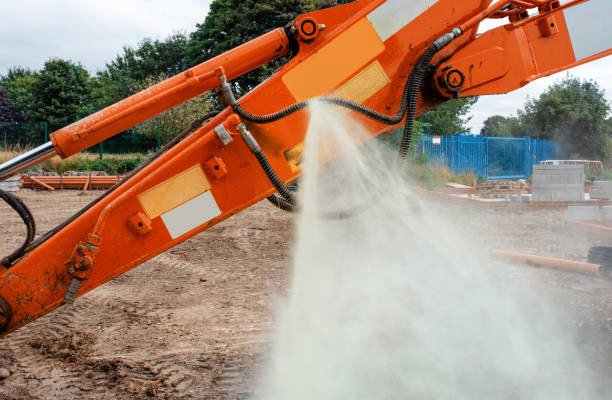
Signs That a Hydraulic Hose Needs Replacement
1. Visible Cracks or Leaks
Cracks in the outer layer or leaking fluid are clear indicators of damage.
2. Stiffness or Loss of Flexibility
A hose that has become overly rigid is at risk of cracking under pressure.
3. Bubbling or Blisters
These signs indicate that the inner layers of the hose have failed.
4. Degraded Fittings
Corrosion or loosened fittings can compromise the entire hydraulic system.
5. Increased Noise or Vibrations
Abnormal system noise may result from a failing hose.
Hydraulic Hose Lifespan: Factors That Affect Durability
The average lifespan of a hydraulic hose depends on various factors:
1. Quality of Material
High-quality hoses made from durable materials will last longer.
2. Frequency of Use
Hoses that are used intermittently may last longer than those subjected to constant use.
3. Operating Environment
Hoses exposed to extreme conditions such as high heat, corrosive substances, or heavy abrasion will wear out faster.
4. Maintenance Routine
Consistent inspections and preventive maintenance significantly extend hose life.
Hydraulic Hose Accessories for Better Maintenance
1. Hose Wraps and Guards
These provide protection against abrasion and physical damage.
2. Quick-Disconnect Fittings
Easier to install and remove, these fittings help reduce wear on the hose ends.
3. Pressure Relief Valves
Installing these valves prevents over-pressurization and reduces strain on the hose.
4. Hose Burst Sleeves
These sleeves contain fluid in the event of a hose burst, preventing accidents.
Safety Precautions During Maintenance
1. Depressurize the System
Always release pressure before inspecting or replacing a hose to avoid injuries.
2. Wear Protective Gear
Safety goggles, gloves, and protective clothing should be worn during maintenance.
3. Avoid Direct Contact with Fluid
Hydraulic fluids can be hazardous. Handle them with care and use spill-proof containers.
4. Secure Connections
Ensure all fittings and connections are tightened properly to avoid leaks or accidental disconnections.
Industry-Specific Maintenance Tips
Different industries encounter unique challenges when storing and maintaining hydraulic hoses.
1. Construction Industry
- Challenges: Exposure to dirt, debris, and heavy machinery vibrations.
- Tips: Use abrasion-resistant covers and inspect hoses daily for wear.
2. Agriculture Industry
- Challenges: Exposure to UV rays, moisture, and varying temperatures.
- Tips: Store hoses in shaded areas and use UV-resistant materials.
3. Manufacturing Industry
- Challenges: High pressure and heat from continuous operations.
- Tips: Use heat-resistant hoses and monitor operating conditions regularly.
Cost Analysis: Benefits of Proper Hydraulic Hose Maintenance
Proper maintenance might seem like an expense, but it saves significant costs in the long run.
Cost of Neglecting Maintenance
- Downtime Costs: Equipment failures can halt production, resulting in lost revenue.
- Repair Costs: Replacing damaged components often costs more than preventive care.
- Safety Risks: Accidents caused by failed hoses can lead to liabilities and medical expenses.
Benefits of Preventive Maintenance
- Reduced downtime and higher operational efficiency.
- Extended equipment and hose lifespan.
- Improved workplace safety.
Investing in maintenance ensures long-term savings and enhanced productivity.
How to Choose the Right Hydraulic Hose for Your System
Selecting the right hydraulic hose is critical for system performance and safety.
Key Considerations When Choosing a Hose
- Pressure Rating: Match the hose to the system’s operating pressure.
- Material Compatibility: Ensure the hose material can handle the hydraulic fluid.
- Temperature Range: Choose hoses rated for the system’s temperature extremes.
- Length and Bend Radius: Avoid overly tight bends to prevent damage.
Best Practices for Selection
- Consult the manufacturer’s guidelines to determine specifications.
- Work with certified professionals for complex systems.
- Regularly review the system’s changing needs to update hose requirements.
Tools and Technology for Hydraulic Hose Maintenance
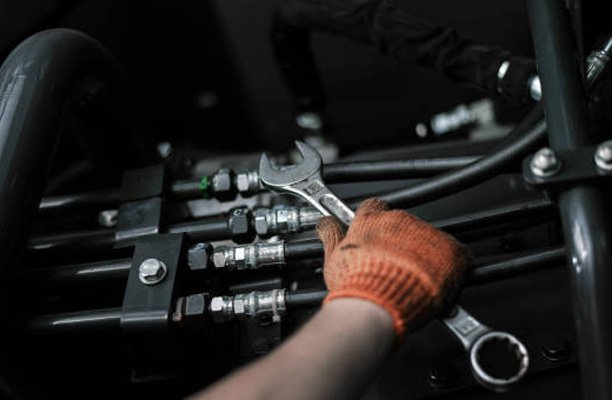
Modern tools and technology can streamline hydraulic hose care and improve system efficiency.
Essential Tools
- Hose Cleaning Kits: Remove internal contaminants efficiently.
- Inspection Cameras: Detect damage in hard-to-reach areas.
- Pressure Testing Equipment: Monitor the hose’s capacity to handle high pressures.
Technological Innovations
- IoT Sensors: Monitor pressure, temperature, and wear in real-time.
- Maintenance Software: Track inspection schedules, inventory, and repair history.
- Automated Reel Systems: Simplify hose storage and reduce manual handling.
Embracing these technologies ensures predictive maintenance and reduces system downtime.
Conclusion
Proper storage and maintenance of hydraulic hoses are essential to ensure system efficiency, safety, and cost-effectiveness. By following the practices outlined in this guide, you can prevent premature failures, extend the lifespan of your hoses, and optimize your hydraulic system’s performance.
Remember, regular inspections, proper handling, and adherence to manufacturer guidelines are the cornerstones of effective hydraulic hose management.
FAQs About Storing and Maintaining Hydraulic Hoses
1. How often should hydraulic hoses be inspected?
Inspect hydraulic hoses every three to six months or as part of your regular maintenance schedule.
2. What is the best way to clean hydraulic hoses?
Use compressed air or foam projectiles designed for hydraulic hoses to remove internal contaminants.
3. Can hydraulic hoses be repaired instead of replaced?
Minor damages can sometimes be repaired using appropriate tools, but replacement is recommended for significant wear or critical applications.
4. How long can hydraulic hoses be stored?
When stored under proper conditions, hydraulic hoses can last up to 10 years without significant degradation.
5. What are the consequences of using damaged hydraulic hoses?
Damaged hoses can lead to fluid leaks, system inefficiency, and potential safety hazards.
6. Are there standards for hydraulic hose maintenance?
Yes, organizations such as ISO and SAE provide guidelines for the design, testing, and maintenance of hydraulic hoses.

